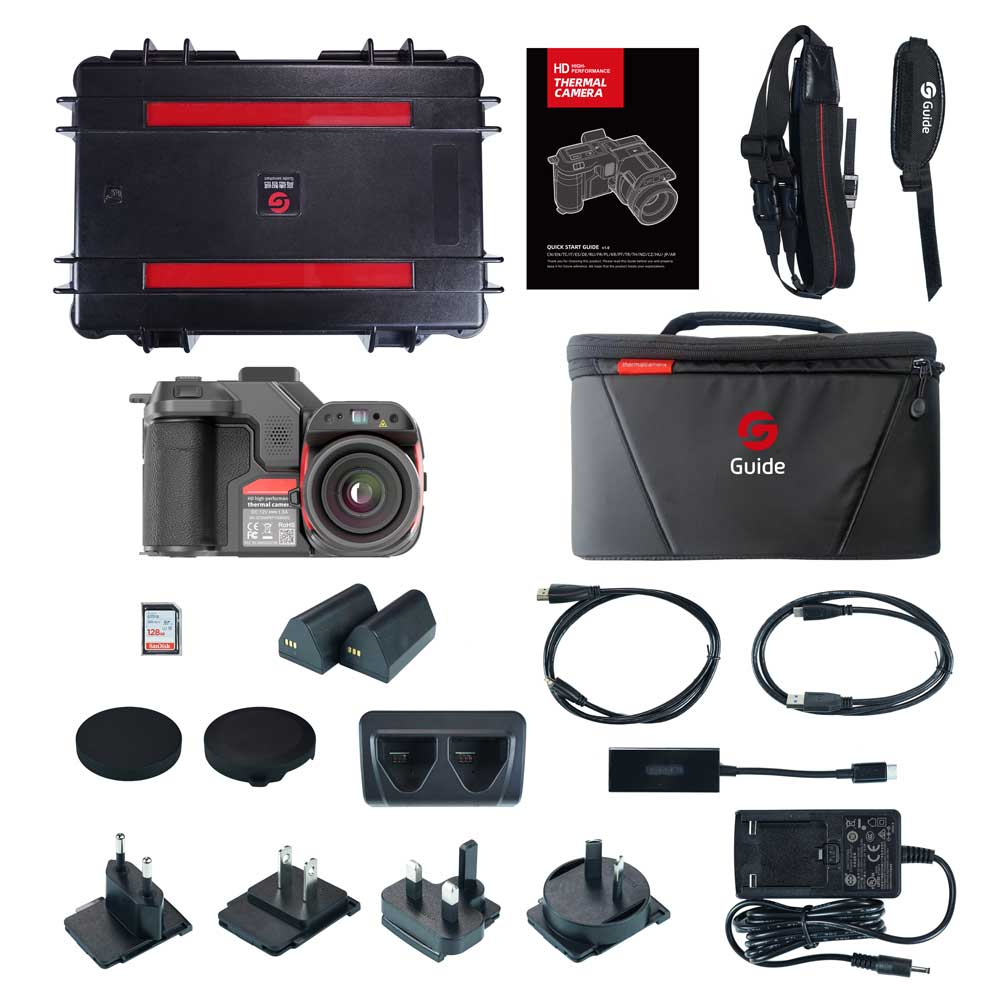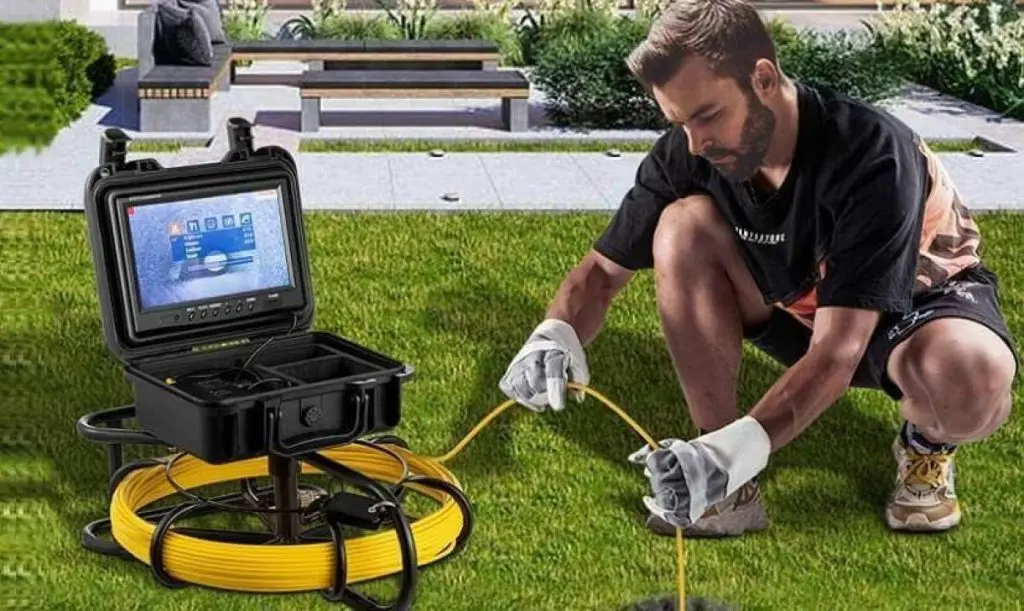To choose the best sewer camera, consider the resolution, ease of use, durability, and price. In addition, look for features like adjustable lighting, waterproof capabilities, and a flexible cable for maneuverability in different pipe sizes and lengths.

Credit: formlabs.com
1. Understanding Sewer Cameras
Looking for the best sewer camera? Understanding sewer cameras is crucial when making a choice. Discover key factors to consider for selecting the perfect sewer camera for your needs.
Before investing in a sewer camera, it’s essential to have a good understanding of what they are and how they work. Sewer cameras are specialized devices used for inspecting and diagnosing issues in sewer lines and plumbing systems. They are equipped with a high-resolution camera that can capture real-time video footage of the inside of the sewer pipes.
1.1 Types Of Sewer Cameras
There are several types of sewer cameras available in the market, each with its own unique features. Here are a few common types:
- Push Cameras: These sewer cameras are attached to a flexible rod and manually pushed through the sewer pipes. They are ideal for shorter distances and smaller pipes.
- Remote-controlled Cameras: These cameras come with a remote control that allows the operator to easily maneuver and control the camera inside the sewer pipes. They are suitable for longer distances and larger pipes.
- Self-propelled Cameras: These innovative cameras have built-in wheels or tracks that allow them to move automatically through the sewer pipes. They are ideal for longer inspections.
Each type of sewer camera has its advantages and limitations, so it’s essential to choose the one that best suits your specific needs.
1.2 Key Features To Consider
When choosing a sewer camera, there are a few key features you should consider to ensure you get the best possible device for your requirements:
- Camera Resolution: Look for a camera with a high-resolution sensor to capture clear and detailed footage of the sewer pipes.
- Lighting: Good illumination is crucial for effective sewer inspections. Choose a camera that offers adjustable LED lighting to ensure optimal visibility.
- Cable Length: The length of the cable will determine how far you can inspect inside the sewer pipes. Ensure the camera comes with a cable that is long enough for your needs.
- Waterproofing: Since sewer pipes are filled with water and debris, it’s crucial that the camera is waterproof and can withstand harsh conditions.
- Compatibility: Check whether the camera is compatible with your device, such as smartphones, tablets, or laptops, to easily view and record inspection footage.
By considering these key features, you can choose a sewer camera that meets your specific requirements and ensures accurate inspections.

Credit: perfectprime.com
2. Evaluating Image Quality
Choosing the best sewer camera requires careful evaluation of its image quality. After all, a clear and detailed image will allow you to accurately assess the condition of the pipes and identify any issues that may be lurking within. In this section, we will look at three important factors to consider when evaluating the image quality of a sewer camera: resolution and clarity, LED lights and illumination, and zooming and pan/tilt functionality.
2.1 Resolution And Clarity
When it comes to assessing the image quality of a sewer camera, resolution and clarity are paramount. The resolution refers to the number of pixels captured by the camera, while clarity is the level of detail and sharpness within the image. A higher resolution and clearer image will provide you with a more accurate view of the pipe’s condition.
It is recommended to opt for a sewer camera with a resolution of at least 720p, as this ensures a sufficient level of detail. Additionally, look for features such as a high dynamic range (HDR) to enhance the camera’s ability to capture details in both bright and dark areas within the pipe.
2.2 Led Lights And Illumination
In order to inspect the insides of pipes effectively, adequate illumination is essential. LED lights built into the camera head are commonly used to provide bright and consistent lighting. These lights should be adjustable, allowing you to control the intensity and angle to ensure optimal visibility of the pipe.
When evaluating a sewer camera’s LED lights, consider how well they illuminate the entire length and diameter of the pipe. Look for adjustable brightness levels and multiple LEDs strategically positioned for even illumination. This will ensure a clearer view of any potential issues, such as cracks, clogs, or corrosion.
2.3 Zooming And Pan/tilt Functionality
The ability to zoom in and pan/tilt the camera can greatly enhance your inspection capabilities. These features allow you to focus on specific areas of interest or maneuver the camera to view different angles within the pipe.
When choosing a sewer camera, look for cameras that offer zooming functionality. A digital zoom can provide a closer look at particular spots, while an optical zoom will maintain image quality even when magnifying the view. Additionally, a pan/tilt functionality enables you to navigate through the pipe and observe the entire circumference.
| Key Points: |
|---|
| In evaluating image quality, consider resolution, clarity, LED lights, and zoom/pan/tilt functionality. |
| Resolution and clarity determine the level of detail captured by the camera. |
| LED lights in the camera head provide essential illumination. |
| Zooming and pan/tilt functionality enhance inspection capabilities. |
To ensure a thorough assessment of a sewer camera’s image quality, it is crucial to evaluate its resolution, clarity, LED lights, and zoom/pan/tilt functionality. By considering these factors, you can select a sewer camera that will allow you to detect and diagnose any potential pipe issues with confidence.
3. Assessing Cable Length And Flexibility
Assessing cable length and flexibility is crucial when selecting the best sewer camera. Consider the requirements of your specific job, as well as the durability and maneuverability of the cable, to ensure an efficient and effective inspection process.
When it comes to choosing the best sewer camera, assessing the cable length and flexibility is crucial. The cable is an essential component of the camera system, as it determines how far the camera can reach into the sewer pipes. Additionally, the flexibility of the cable plays a significant role in maneuvering through bends and obstacles in the pipes.
3.1 Optimal Cable Length For Different Applications
When selecting a sewer camera, it is important to consider the optimal cable length for your specific application. The cable length you choose will depend on the size and depth of the pipes you need to inspect. Here are some guidelines to help you determine the ideal cable length:
- Main sewer lines: For main sewer lines, which are typically larger in size and deeper, a longer cable length is recommended. A cable length of at least 100 feet is generally sufficient to reach and inspect the entire length of these pipes.
- Residential pipes: If you primarily deal with smaller residential pipes, a shorter cable length may be more suitable. A cable length of around 50 to 75 feet should be sufficient to navigate through these pipes without any issues.
- Narrow or confined spaces: In cases where you need to inspect narrow or confined spaces, such as tight bends or small lateral lines, a flexible cable with a shorter length may be more advantageous. This allows for easier maneuverability and ensures you can access hard-to-reach areas.
3.2 Importance Of Cable Flexibility
Along with cable length, cable flexibility is another crucial factor to consider when choosing a sewer camera. The flexibility of the cable determines its ability to navigate through bends, curves, and obstacles in the sewer pipes. A rigid or inflexible cable may get stuck or have difficulty progressing through the pipes, hindering the inspection process.
An ideal sewer camera cable should be highly flexible, allowing it to effortlessly maneuver through tight spaces and negotiate any obstacles it may encounter in the pipes. This flexibility ensures that the camera can capture clear visuals of the entire pipe system and identify any potential issues that may be present. It’s important to select a cable that offers both durability and flexibility, as they go hand in hand in providing optimal performance during sewer inspections.
4. Examining Camera Size And Durability
Examining camera size and durability is crucial when selecting the best sewer camera. Consider the compactness and ruggedness of the camera to ensure effective usage in various sewer conditions.
When it comes to choosing the best sewer camera, examining camera size and durability is crucial. This step ensures that your investment is both practical and long-lasting. In this section, we will focus on two important aspects: compact and lightweight designwaterproof and shockproof features. Let’s dive in!4.1 Compact And Lightweight Design
A compact and lightweight design is essential for a sewer camera as it offers ease of use and portability. Sewer systems often have narrow and tight spaces, so a camera that is too bulky or heavy may hinder your inspection process. Opting for a smaller camera ensures maneuverability and access to hard-to-reach areas. When choosing a sewer camera, look for models that are engineered with lightweight materials such as aluminum or plastic without compromising durability. These materials make the camera more manageable and comfortable to carry during inspections. Additionally, a compact design allows for easy storage and transportation, making it convenient for professionals on the go.4.2 Waterproof And Shockproof Features
The nature of sewer inspections exposes the camera to harsh environments, including water and potential physical impact. Therefore, it’s crucial to choose a camera with waterproof and shockproof features to ensure its longevity. Waterproofing is vital as it protects the camera from damage caused by water exposure. Look for cameras with a high IP (Ingress Protection) rating. The higher the rating, the better the camera can withstand water submersion. A camera with an IP67 rating, for example, can handle being submerged in water up to one meter for a certain period of time. Apart from water, the camera should also be capable of withstanding shocks and potential drops. A shockproof feature ensures that accidental falls during inspections won’t result in damage or malfunction. Choose a camera with robust construction and innovative shock-absorbing technology to minimize the risk of impact-related issues. To summarize, when choosing a sewer camera, prioritize a compact and lightweight design for easier navigation through tight spaces. Ensure the camera is equipped with waterproof and shockproof features to guarantee its durability and protect it from harsh environments. By considering these factors, you’ll be well on your way to selecting the best sewer camera for your needs.5. Considering Additional Features And Pricing
When choosing a sewer camera for your plumbing inspections, it’s important to consider additional features and pricing options to ensure you get the best value for your money. In this section, we will explore three crucial aspects to keep in mind: built-in recording and playback, wireless connectivity options, and warranty and customer support. These factors can greatly impact your experience with the sewer camera and help you make an informed decision.
5.1 Built-in Recording And Playback
A sewer camera with built-in recording and playback capabilities is highly recommended, as it allows you to review the footage captured during inspections. This feature is especially useful when dealing with complex plumbing issues or when sharing the findings with clients or colleagues. By simply pressing a button, you can record the entire inspection process and play it back later for further analysis.
With built-in recording and playback, you can easily identify any blockages, leaks, or other problems within the sewer system. This visual evidence can be instrumental in making accurate diagnoses and implementing appropriate solutions. Look for sewer cameras that offer high-quality video recording and playback features for the best results.
5.2 Wireless Connectivity Options
Wireless connectivity options in a sewer camera can greatly enhance its usability and convenience. With wireless capabilities, you can view live footage on a separate display device, such as a tablet or smartphone, without the need for cumbersome cables or wires. This allows for greater mobility and flexibility during inspections, especially in tight or hard-to-reach spaces.
Furthermore, wireless connectivity enables easy sharing of inspection footage with clients, colleagues, or other stakeholders. You can instantly send video clips or images directly from the sewer camera to a mobile device or email, facilitating prompt decision-making and collaborative problem-solving. Prioritize sewer cameras that offer reliable wireless connectivity for seamless and efficient inspections.
5.3 Warranty And Customer Support
Considering the warranty and customer support provided by the manufacturer or seller is crucial when investing in a sewer camera. A comprehensive warranty ensures that you are protected against any defects or malfunctions that may arise after purchase. Look for a warranty that covers both the camera and its components, including cables, monitors, and accessories.
Additionally, reliable customer support can make a significant difference in your overall experience with the sewer camera. Whether you have questions, need troubleshooting assistance, or require guidance on operating the equipment, responsive and knowledgeable customer support is invaluable. Prioritize manufacturers or sellers that offer prompt and helpful customer service to address any concerns or queries you may have.

Credit: www.enviousdetailing.com
Frequently Asked Questions For How To Choose Best Sewer Camera
How Do I Choose A Sewer Camera?
To choose a sewer camera, follow these guidelines: 1. Determine the camera’s purpose, such as inspecting pipes or locating blockages. 2. Consider the camera’s resolution, lighting capabilities, and cable length. 3. Look for durable construction and waterproof design for reliability.
4. Evaluate the camera’s compatibility with different access points and pipe sizes. 5. Compare prices, warranties, and customer reviews to make a final decision.
Are Sewer Cameras Worth It?
Yes, sewer cameras are worth it for detecting hidden issues quickly and accurately. They provide visual inspection of pipes, saving time and cost on unnecessary repairs. With their advanced technology, sewer cameras help in identifying blockages, leaks, and pipe condition, ensuring efficient maintenance and preventing future problems.
Can A Sewer Camera Go Down The Toilet?
Yes, a sewer camera can go down the toilet.
How Far Can A Sewer Camera Go?
A sewer camera can go as far as the length of the sewer line it is being used in. There is no specific limit on how far it can reach.
Conclusion
Choosing the best sewer camera requires careful consideration of various factors. By understanding your specific needs, considering the camera’s features and capabilities, and evaluating customer reviews and ratings, you can make an informed decision. Remember to prioritize durability, ease-of-use, and image quality when selecting a sewer camera that will provide accurate and efficient inspections.
With the right tool in hand, you can tackle sewer inspections with confidence and ensure the smooth functioning of your plumbing systems.

